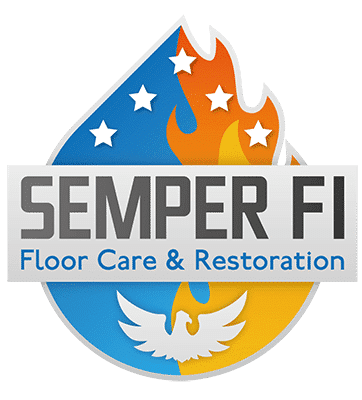Water damage can strike at any time and for any number of reasons—burst pipes, roof leaks, storms, or appliance failures. When it happens, quick action can mean the difference between minor damage and a major restoration project. While it’s always wise to contact professionals like Semper Fi for emergency water removal, there are a few important steps you can take immediately to protect your property and personal safety before help arrives.
Acting fast not only helps reduce water damage but also prevents mold growth and further complications. These early steps can also provide valuable information to the professionals when they arrive, helping them begin restoration work more efficiently.
Step 1: Prioritize Safety and Turn Off the Power
The very first thing to do is ensure that you and anyone in the home or building are safe. If the water is near electrical outlets, wiring, or devices, there’s a risk of shock. Turn off the electricity to the affected area if it’s safe to do so. Avoid stepping into standing water until you’re certain the power is off in that area. If water is coming from above or near the ceiling, stay alert for sagging or weakened structures that might collapse. In such cases, it’s safer to vacate the room and wait for professional help to assess the stability of the structure.
Step 2: Identify the Source of the Water
Once you’ve secured the area, try to locate the source of the water. If it’s a burst pipe, toilet overflow, or leaking appliance, turn off the main water supply to stop the flow. Knowing where your water shutoff valve is located before an emergency occurs is crucial. If the water is coming from outside, like storm flooding or roof damage, take note of how the water is entering the building. This information will be useful for the restoration team and may help with your insurance claim as well.
Step 3: Remove Valuable Items from the Affected Area
Time is critical in any water emergency. Remove personal belongings, electronics, furniture, and important documents from the affected area as quickly and safely as possible. Items made of wood, fabric, and paper are particularly susceptible to water damage. If larger furniture can’t be moved, place plastic or aluminum foil under the legs to help prevent further saturation. The goal is to minimize damage and reduce the chance of mold growing on wet items. Be cautious while moving wet or heavy items—waterlogged materials can weigh much more than usual and may cause strain or injury.
Step 4: Start Removing Excess Water and Moisture
If it’s safe and manageable, you can begin removing some of the excess water. Use towels, mops, or a wet/dry vacuum if you have one available. You don’t need to dry everything completely—just removing standing water can drastically reduce the extent of the damage. Open windows and doors if weather permits, and set up fans to improve air circulation. If you have access to a dehumidifier, running it will help reduce indoor humidity and slow down the growth of mold and mildew. Keep in mind that drying things out too slowly or incompletely can allow mold to take hold, which is why professional drying equipment and moisture meters are typically needed for full restoration.
Step 5: Document the Damage for Insurance and Restoration
Before cleanup goes too far, take photos or videos of the water damage. Capture affected walls, flooring, ceilings, and personal property. These visuals are essential for insurance claims and also help professionals determine the extent of the water intrusion. If possible, make notes about when the incident occurred, what was damaged, and how it happened. Insurance companies require this information to evaluate coverage and start your claim process. Providing detailed documentation upfront will save time later and may improve your chances of getting fair compensation.
When to Call Semper Fi for Help
After you’ve completed these critical steps, it’s time to call in the professionals. At Semper Fi, we offer emergency water removal services backed by experience, equipment, and fast response. Whether it’s day or night, our team is ready to respond to your water damage emergency quickly and effectively. We use high-powered pumps, industrial drying equipment, and advanced moisture detection tools to ensure no hidden water is left behind.
Water damage restoration isn’t just about drying things out—it’s about restoring your home to its original condition safely, quickly, and completely. That’s why we also handle structural drying, mold prevention, and repair of damaged materials. Our technicians are trained to assess both visible and hidden water intrusion, providing peace of mind that the job is done right the first time.
Call us now at (928) 228-4960 if you’re facing a water damage emergency. Don’t wait—every minute matters when water is involved.
Conclusion
Emergencies involving water damage are stressful, but knowing what to do in the first critical moments can greatly reduce the impact on your home and belongings. Prioritizing safety, stopping the source, moving valuables, removing standing water, and documenting the damage all contribute to a smoother restoration process. Once these initial steps are taken, turning the job over to professionals like Semper Fi ensures that the full scope of the damage is addressed properly and efficiently.
We’re here to help you recover fast and restore what matters. Contact us at (928) 236-9298 for trusted water damage restoration services when you need them most.


